#parastacidae
Text


Crayfish (Cherax pulcher), family Parastacidae, from freshwater streams in West Papua, Indonesia
photograph by Christian Lukhaup | ZooKeys
3K notes
·
View notes
Text
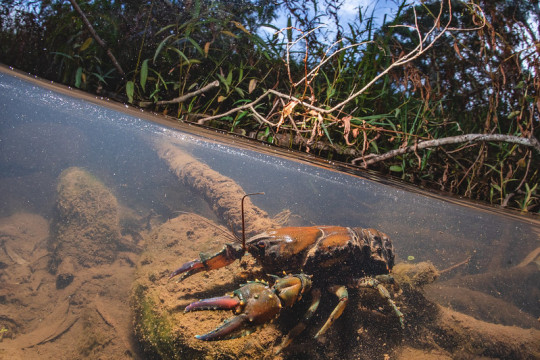
A Fitzroy Falls spiny crayfish (Euastacus dharawalus) in the Sydney Basin, New South Wales, Australia
by Ian Bool
#fitzroy falls spiny crayfish#crayfish#lobsters#crustaceans#euastacus dharawalus#euastacus#Parastacidae#decapoda#malacostraca#crustacea#arthropoda#wildlife: australia#wildlife: new south wales
215 notes
·
View notes
Text
Uncharismatic Fact of the Day
The giant Tasmanian freshwater lobster (or the giant Tasmanian freshwater crayfish) is the largest freshwater invertebrate in the world. This species of crayfish can weigh up to 6 kg (13 lbs) and grows to 80 cm (31 in) long over a period of 30 to 60 years.

(Image: A Tasmanian giant freshwater lobster (Astacopsis gouldi) by Dan Broun)
If you like what I do, consider leaving a tip or buying me a ko-fi!
#giant tasmanian freshwater lobster#Decapoda#Parastacidae#freshwater crayfish#crayfish#crustaceans#arthropods#uncharismatic facts
258 notes
·
View notes
Photo

A new species of crayfish of the genus Cherax from Indonesian New Guinea (Crustacea, Decapoda, Parastacidae)
Christian Lukhaup, Rury Eprilurahman
Abstract
A new species of the genus Cherax is described and illustrated. Cherax wagenknechtae sp. nov., endemic to the Beraur and Klasabun River drainages in the western part of the Kepala Burung (Vogelkop) peninsula, West Papua, Indonesia, is described, figured and compared with its closest relatives, Cherax pulcher Lukhaup, 2015. The new species may be easily distinguished from Cherax pulcher by the shape of the chelae, rostrum and body, and coloration.
Read the paper here:
https://zse.pensoft.net/article/94753/
42 notes
·
View notes
Text

Blue Yabby
Blue Yabby (Cherax destructor). Also know as common yabby is an Australian freshwater crustacean in the Parastacidae family. Visit: https://www.pasesaqua.com.au/
"blue yabby"
1 note
·
View note
Text
Buku biologi sma kelas xii pdf
BUKU BIOLOGI SMA KELAS XII PDF >>Download
vk.cc/c7jKeU
BUKU BIOLOGI SMA KELAS XII PDF >> Read Online
bit.do/fSmfG
buku biologi kelas 12 kurikulum 2013 pdf
download buku biologi kelas 12 kurikulum 2013 pdf
buku biologi kelas 12 kurikulum 2013 erlangga pdf
buku paket biologi kelas 12 kurikulum 2013 pdfbuku biologi kelas 12 pdf
9 апр. 2018 г. — -ridge-61720.herokuapp.com/Sony-Acid-Pro-6-incl-Keygen-keygen.pdf -Quality-Kisi-Kisi-Soal-Biologi-Sma-Kelas-Xi-Semester-2/profile. .com/stories/3471721-__link__-ogilvy-on-advertising-book-pdf-free-download /stories/3474454-kunci-jawaban-buku-kerja-biologi-esis-kelas-xi-semester- Salastarèna ka'ḍinto pas tantowaghi ponapa ghâncaran ka'ḍinto tamaso' paragraf deskripsi, narasi, eksposisi, persuasi, otabâ argumentasi. 13. Bhâsa Madhurâ SMA/ Jenis tanaman yang paling mendominasi dari kelas pohon, pancangdan tiang yang dilakukan di Laboratorium Mikrobiologi Jurusan Biologi FMIPA Unnes. Resnick Fisika Edisi 3 Jilid Kelas X Semester 2 Ppt Pdf File Type Pdf Buku Fisika Sma Pdf Free Ebook Download Ebookdigbiz Resnick amp Halliday Physics Scarica: Buku Biologi Kelas 12 SMA Kuri APK (App) - ✓ Ultima versione: 1.1 - Updated: 2022 - com.fatch.bukusekolahbiologikelas12 - Fatch Developer - Gratis Robin Ginting - Lili Abdullah Rojak Buku Siswa: Edisi Revisi 2016 MODUL BIOLOGI KELAS XII SMAN 20 SURABAYA.doc. Moh Nazario de Lima · MODUL BIOLOGI LOBSTER AIR TAWAR (Parastacidae: Cherax, ASPEK BIOLOGI, HABITAT, PENYEBARAN, TANDON AIR TERHADAP HASIL BELAJAR SISWA DI KELAS X SMA NEGERI 3 KOTA MANNA.
https://www.tumblr.com/demesuwocog/697863209802203136/super-jolly-grinder-pdf995, https://www.tumblr.com/demesuwocog/697863113164341248/dubliners-pdf-chomikuj-muzyka, https://www.tumblr.com/demesuwocog/697863209802203136/super-jolly-grinder-pdf995, https://www.tumblr.com/demesuwocog/697863209802203136/super-jolly-grinder-pdf995, https://www.tumblr.com/demesuwocog/697863348968144896/philip-ball-listinto-musicale-pdf.
0 notes
Photo

Southern hairy crayfish (Euastacus hirsutus) in an Australian creek bed
Ian Bool
185 notes
·
View notes
Text
Are You A Professional Fisherman In Australia? Find Life-size Portraits Of Fish Species.
If you are a fisherman looking for some life-sized portraits of Australian fish species, then here is the list of some amazing fish species found in Australia.
1. Leopard Coral Grouper: The Leopard Coral Grouper is a species of marine ray-finned fish. It is mainly found in the western Pacific region. This Australian fish species is widely distributed from Southern Japan to Australia and from the eastern coast of Thailand and Malaysia to the Solomon Islands, the Caroline Islands, and Fiji.

2. Bidyanus Bidyanus: This silver perch Australian fish species is a medium-sized freshwater fish that is found in the Murray-Darling river system in south-eastern Australia. This fish species is omnivorous, feeding on insect larvae, molluscs, annelid worms, and algae.

3. Striped Marlin: This fish species is a species of marlin, found mainly in tropical to temperate regions in the Indo-Pacific Ocean. They made a record in game fish with a weight of 190 kg and a length of 4.2 m. they are amazing predators.
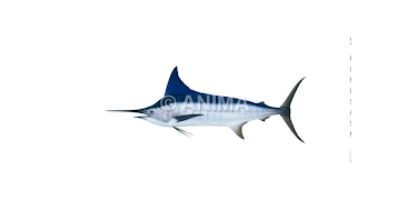
4. Tailor: This Australian fish species are found around the world, so it is known by different names in different locations. It is called tailor in Australia and New Zealand, elf and shad in South Africa. It is the only extant species of the family Pomatomidae.
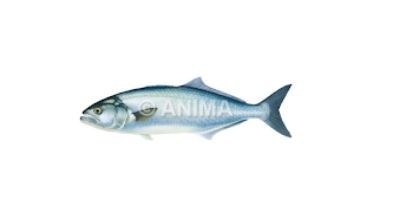
5. Australasian Snapper: The Australasian Snapper is a species of porgie found in the coastal waters of Australia, Philippines, Indonesia, China, Taiwan, Japan, and New Zealand. Although it is called snapper, it doesn’t belong to the snapper family.

6. Common Yabby: The Common Yabby is an Australian freshwater crustacean in the Parastacidae family. It is a vulnerable species of crayfish. Their color varies greatly and depends on the water clarity and habitat. They can reach up to a maximum length of 30 cm but are common of about 10-20 cm long.
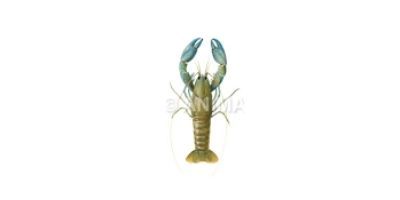
Tiger Shark: This Australian fish species is not just found in Australia, but also in other tropical and temperate waters, especially around central Pacific islands. These fish are named so because their body has dark stripes down the body, which resemble a tiger’s pattern.

#marine life image bank#illustrate#original illustrations#fish illustrations#Illustrated images#illustrations of fishes#illustrations of reef fish#fish#marine life#marine creatures#marine animals#animal blog#Australian fish species#Australian freshwater crustacean#Australasian Snapper
1 note
·
View note
Text
5 Exciting Facts about Crayfish that will leave you stunned
How fancy wouldn’t it be to witness the unknown journey and impeding life of the numerous fishes in the ocean by swimming next to them till the ocean’s end? Well, we know it’s possibly quite difficult to afford such dreams to fulfill but undoubtedly you can learn about some exciting facts about the fish species, Crayfish by simply sitting wherever you are.
Besides, not just that, you can also witness the delectable taste of fresh crayfish in Kaikoura by paying a visit to the most loved ambiance, Karaka Lobster café. To learn more, visit the website soon.
For now, let’s dive in here.
1. Crayfish are ‘Arthropod’
Yes, crayfishes are from the diverse arthropod species.
Just to recall, the arthropod is those species of taxonomy that lack backbone but have an exoskeleton i.e. a hard outer structure that provides protection and extra endurance, movement, and strength.
Furthermore, some of these species include crayfish, arachnids, and crustaceans that have a segmented body with jointed appendages.

2. Crayfish Fossil records are older than ‘A Million years’
Do you know, the fossils of crayfishes found are more than 30million years old which is a rare case. Rare because, one of the species of the crayfish, Parastacidae’s fossil found are estimated to be around 115 million years old.
3. They have around ‘A Thousand’ of sensory bristles
Crayfishes are one of the diverse classes of arthropod which have nearly a thousand sensory bristles. A few of them are sensitive to chemicals while the other helps them to hear, touch, feel, smell, and thereby keep from their predators.
Although they are completely covered by a hard shell yet the power of their sensory bristles never acts as a bluff to their incredible features.
4. Crayfishes use their Antennae for ‘4 Varied Tasks’
Generally, the fishes use their antennae for sensing motion in the waters but as a matter of fact, the crayfishes use their antennae not just for flow-sensing but for two more varied tasks.
Crayfish have two different sets of antennae, long and small. The smaller antennae help them to smell food, fling, and predators while the longer ones help them in physically sensing the nearby area inside the water.
5. They like to feed on aquatic plants
Crayfish like to feed on aquatic plants mostly. Besides, they also like to consume small fishes, fish eggs, and invertebrates.
Bonus Fact
Crayfishes are often served in restaurants and cafés such as Karaka Lobster. They are famous for serving fresh crayfish in Kaikoura at a surprisingly affordable price.
Nowadays, crayfishes are not just can be rejoiced through the eyes but can also be tasted and cherished as much as desired in the form of delectable crayfish cuisines. Therefore, if you too want to taste and enjoy the diverse crayfish pay a visit to the Karaka Lobster café anytime. To view details, visit the website today.
1 note
·
View note
Text
The Common Yabby!
The Common Yabby is an Australian fresh water crustacean in the family Parastacidae
They are listed as vulnerable by the IUCN but their wild population is expanding. During mating season they will travel large distances and they have been making their home in artificial water bodies like dams
If you have read this far why not follow us @animalfacthub for daily animal facts and pics!
-

📷1: “CheraxQuadricarinatus.jpg” by Graysilver on Wikimedia Commons (CC BY-SA 3.0)

📷2: “Cherax alyciae 1.jpg” by QTHCCAN on Flickr (CC BY-SA 3.0)
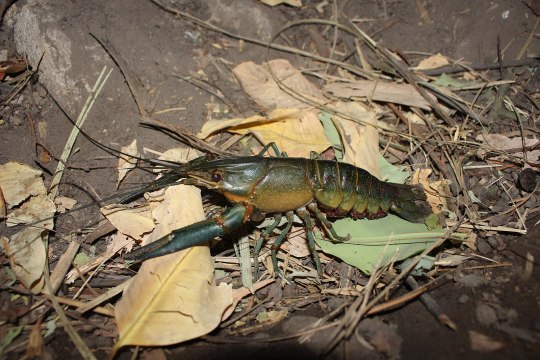
📷3: “Australian red claw crayfish (Cherax quadricarinatus).jpg” by nature.catcher on Wikimedia Commons (CC BY-SA 4.0)
1 note
·
View note
Text
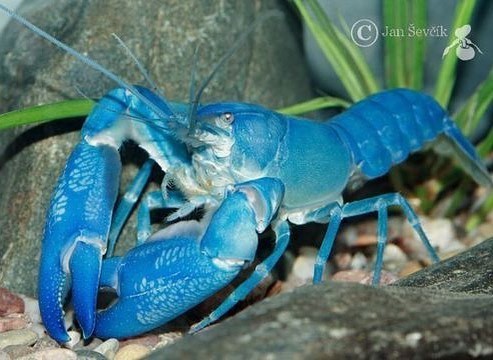
Common Yabby Crayfish (Cherax destructor), family Parastacidae, Australia
photograph by Jan Ševčík
643 notes
·
View notes
Text
Doença Urina Preta

O Ministério da Agricultura, Pecuária e Abastecimento (Mapa) divulgou uma nota na qual alerta sobre uma possível relação entre os casos de doença de Half, conhecida como “urina preta”, observados este ano no Brasil, e o consumo de peixes, mariscos e crustáceos sem o selo dos órgãos de inspeção oficiais.


De acordo com a pasta, todos os casos notificados e em investigação estão sendo acompanhados por epidemiologistas do Ministério da Saúde, em cooperação com os Laboratórios Federais de Defesa Agropecuária (LFDA) e o Instituto Federal de Santa Catarina (IFSC).
A doença de Haff apresenta como sintomas rigidez muscular frequentemente associada ao aparecimento de urina escura, que resulta de insuficiência renal. Ela se constitui em um tipo de rabdomiólise, nome dado para designar uma síndrome que gera a destruição de fibras musculares esqueléticas e libera elementos de dentro das fibras - como eletrólitos, mioglobinas e proteínas - no sangue.
A nota do Mapa informa que os primeiros sinais e sintomas podem se manifestar nas 24 horas após o consumo de peixe cozido, lagostim e outros frutos do mar contaminados.
“A enfermidade é considerada emergente e, por ter origem desconhecida, enquadra-se como evento de saúde pública (ESP), sendo considerada de notificação compulsória”, diz a nota.
Ainda segundo o ministério, os primeiros casos de doença de Half registrados no Brasil foram em 2008, com origem em espécies de água doce como o Pacu (Mylossoma spp), tambaqui (Colossoma macropomum) e pirapitinga (Piaractus brachypomus), bem como em peixes de água salgada, como a arabaiana/olho-de-boi (Seriola spp) e badejo (Mycteroperca spp).
Foram também registrados casos em 2016 e, agora, em 2021. Diante da situação, o Mapa está orientando a população a ficar atenta na hora de comprar pescados, de forma geral.
“Peixes, mariscos e crustáceos comercializados devem conter o selo dos órgãos de inspeção oficiais”, alerta o ministério, ao informar que produtos identificados pelo carimbo de inspeção na rotulagem possibilitam a rastreabilidade de sua origem, o que os torna seguros.
A dificuldade para a identificação do material contaminado está no fato de que a toxina causadora não tem gosto nem cheiro específicos, o que torna mais complexa a sua percepção. Nos relatos registrados ao longo dos anos, pessoas acometidas da doença ingeriram diferentes tipos de peixe, como salmão, pacu-manteiga, pirapitinga, tambaqui, e de diversas famílias como Cambaridae e Parastacidae.
“Pesquisas sobre os possíveis agentes causadores estão sendo realizadas pelo LFDA e o IFSC, a partir das amostras coletadas dos alimentos consumidos, bem como de material biológico dos próprios pacientes acometidos. Por ter sido registrada em diversos biomas (rios, lagos, mares etc) e espécies, não é possível, até o momento, determinar, com base nos casos analisados, os ambientes e animais envolvidos”, informa a nota.
De acordo com o Mapa, foram feitas pesquisas de amostras na busca por “moléculas suspeitas”, especialmente de grupos onde é mais provável encontrar toxinas causadoras da doença de Haff. No caso, “moléculas análogas que podem ser produzidas por microalgas tóxicas”.
Fonte: opovo | Veja também: "Dória pressiona Anvisa por mais vacinas".
Read the full article
0 notes
Photo
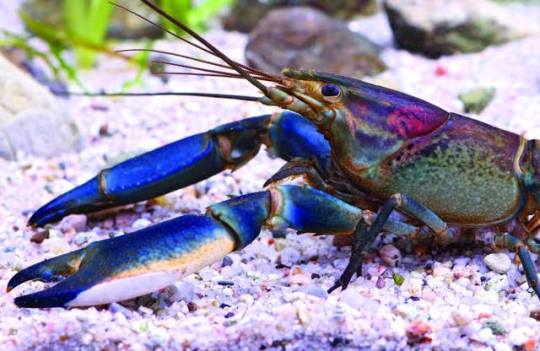

New species of lovely endemic crayfish discovered in West Papua, Indonesia
Cherax warsamsonicus, a new species of crayfish from the Kepala Burung (Vogelkop) peninsula in West Papua, Indonesia (Crustacea, Decapoda, Parastacidae)
A new species, Cherax warsamsonicus sp. n., endemic to the Warsamson River drainage, in the western part of the Kepala Burung (Vogelkop) peninsula, West Papua, Indonesia, is described, figured and compared with its closely related species, Cherax misolicus Holthuis, 1949. The new species may be easily distinguished from C. misolicus by the shape of the rostrum, absence of setae on the rostrum, the shape of the chelae, the presence of 3-4 cervical spines and by using sequence divergence, which is substantial for considering C. warsamsonicus sp. n. to be a new species. The new species is collected and exported for ornamental purposes and its commercial name in the pet trade is Cherax “irian jaya”, Cherax “pink coral”, or Cherax “hoa creek“. Due to similar colouration it is often confused with the recently described Cherax pulcher Lukhaup, 2015.
The full study is openly published with us at: https://doi.org/10.3897/zookeys.660.11847
via: Leibniz-Institut für Gewässerökologie und Binnenfischerei
577 notes
·
View notes
Photo

Euastacus spinifer
...a striking species of Parastacid crayfish which is endemic to Australia. In Australia its range is limited, restricted to a small area in eastern New South Wales. E. spinifer are typically encountered in creeks and estuaries, usually those shaded by vegetation. Like many crayfish species, detritus forms the bulk of the diet of E. spinifer, but they are also known to take small invertebrates, tadpoles, and even other crayfish.
Classification
Animalia-Arthropoda-Crustacea-Malacostraca-Decapoda-Parastacidae-Euastacus-E. spinifer
Image: Mark McINtosh
#Euastacus spinifer#Crayfish#Parastacidae#Decapoda#Malacostraca#Crustacea#Arthropoda#Australia#Freshwater
137 notes
·
View notes
Photo

This wonderful freshwater crayfish Cherax (Astaconephrops) pulcher is a new species discovered from Hoa Creek, close to Teminabuan, in the Southern-central part of the Kepala Burug Peninsula, West Papua, Indonesia.
Despite the crayfishes from New Guinea were extensively studied by several scientists, from 1949 to 2008, always is possible find new unknown animas to discover.
By the way, its name, derived from the Latin “pulcher” meaning beautiful, alluding to the colourful appearance of the species.
Photo: A adult male from Aquarium Dietzenbach B immature male from Hoa Creek, West Papua C female from aquarium import (not listed in material examined) from Indonesia by Lukhaup.
Reference (Open Access) Lukhaup. et al. 2015. Cherax (Astaconephrops) pulcher, a new species of freshwater crayfish (Crustacea, Decapoda, Parastacidae) from the Kepala Burung (Vogelkop) Peninsula, Irian Jaya (West Papua), Indonesia
#cherax (astaconephrops) pulcher#new species#crustacea#decapoda#parastacidae#science#biodiversity#animals#biology#marine biology
143 notes
·
View notes